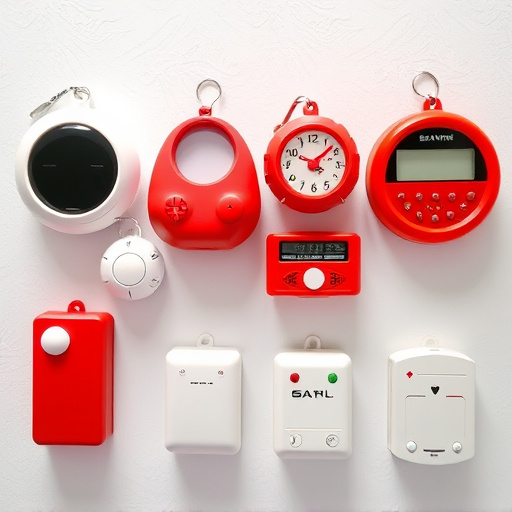Personal safety alarms, with distinct personal alarm sounds and coverage areas of 100-500 feet, empower college students to quickly summon help in emergencies on large campuses. Key features include loud, piercing sounds with stun capabilities, ease of carry/activation, water resistance, smartphone compatibility, customizable alarms, and strategic placement for optimal security. Legal protections and institutional policies regarding personal alarm use ensure safety while adhering to regulations.
College students face unique challenges regarding personal safety, making it crucial to explore innovative solutions like personal safety alarms. This article delves into the world of these compact devices, offering a powerful means of protection for students on campus. From understanding the basic functionality and choosing the right features, to strategic placement and legal considerations, we explore how personal alarms can enhance security with their distinct and effective sound coverage areas.
- Understanding Personal Safety Alarms: A Lifesaving Tool for College Students
- Key Features to Consider When Choosing a Personal Alarm
- Effective Use Cases and Placement Strategies for Optimal Coverage Area
- Legal Aspects and Campus Policies Related to Personal Safety Alarms
Understanding Personal Safety Alarms: A Lifesaving Tool for College Students
Personal safety alarms are compact, portable devices designed to protect college students while they navigate campus life and adjacent areas. These powerful tools emit a distinct and loud personal alarm sound that can attract attention and deter potential threats quickly. When activated, the alarm signals distress and alerts nearby individuals or authorities within a certain coverage area. This immediate response time can be crucial in situations where a student feels unsafe, is lost, or encounters an emergency.
The coverage area of these alarms varies among models but typically ranges from 100 to 500 feet, ensuring that students have peace of mind while attending classes, studying in the library, or walking alone at night. This safety net is particularly valuable on large college campuses where visibility and assistance may be limited. By carrying a personal safety alarm, students can feel empowered to take charge of their well-being and quickly summon help if needed.
Key Features to Consider When Choosing a Personal Alarm
When selecting a personal safety alarm, several key features should guide your decision. Firstly, consider Personal Alarm Sound: Look for devices with loud, piercing alarms that can attract attention quickly in an emergency. Some even incorporate stun capabilities for self-defense. Secondly, Coverage Area is critical; ensure the alarm has sufficient range to alert those nearby when activated. This could be a difference between safety and risk in potentially dangerous situations.
Additional features like ease of carry and activation, water resistance, and compatibility with smartphones or apps for remote alerts are also beneficial. Some models offer customizable alarms or lights, allowing users to adapt the signal to their environment or personal preferences. These considerations collectively contribute to your safety and peace of mind while navigating campus life.
Effective Use Cases and Placement Strategies for Optimal Coverage Area
Personal safety alarms designed for college students are most effective when strategically placed and utilized appropriately. Ideal placement varies based on campus layout, but common spots include dorm rooms, communal living areas, and high-traffic pathways. The alarm’s distinctive personal alarm sound should be loud enough to pierce through ambient noise, ensuring it catches attention quickly in case of an emergency.
For optimal coverage area, consider deploying alarms at key intersections within the student’s daily routine. This might include entry and exit points of dormitories, classrooms, libraries, and campus centers. Additionally, personal safety alarms can be valuable tools for solo walks or late-night studies, allowing students to quickly alert others in case of a perceived threat.
Legal Aspects and Campus Policies Related to Personal Safety Alarms
In many regions, personal safety alarms for college students are legally protected under laws designed to ensure individual autonomy and security. These laws often stipulate that individuals have the right to carry and activate personal alarm devices without fear of legal repercussions, as long as they do so in public spaces or areas where there is a reasonable expectation of privacy. Additionally, campuses themselves typically have policies regarding personal safety alarms, outlining rules for their use and ensuring they complement existing security measures.
Campus policies on personal safety alarms often include guidelines on the acceptable sound levels and coverage areas for these devices. While some institutions may encourage students to carry personal alarms as a preventive measure, others might have specific no-alarm zones within campus buildings or during certain events to avoid false alarms and ensure the peace of mind of all members of the college community. Understanding both legal protections and institutional policies is crucial for maximizing the benefits of personal safety alarms while adhering to relevant regulations.
Personal safety alarms are a powerful tool for college students, offering peace of mind and enhanced security. By understanding key features, effective use cases, and legal considerations, students can make informed choices to protect themselves in their campus environments. The right personal alarm, with its distinct and loud sound, ensures maximum coverage area, providing an extra layer of safety during solo walks or in remote locations. Staying aware and prepared is the first step towards a safer college experience.
